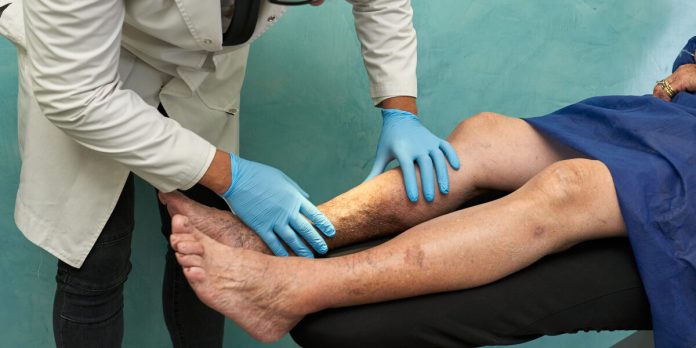Varicose veins are swollen, twisted veins that typically occur in the legs, causing discomfort and sometimes leading to more severe complications. If left untreated, varicose veins can result in pain, swelling, and even skin ulcers. Fortunately, there are several medical procedures available to treat varicose veins. This article will explore the varicose veins procedure, outlining treatment options, their benefits, and how to decide the best course of action.
What Are Varicose Veins?
Varicose veins develop when the valves in your veins weaken or become damaged. These valves normally keep blood flowing in one direction toward your heart. When they fail to function properly, blood can pool in your veins, causing them to enlarge. Varicose veins often appear blue or purple and bulge just under the surface of the skin.
Symptoms of Varicose Veins
Common symptoms of varicose veins include:
- Swelling and aching in the legs
- Cramping or throbbing pain
- Heaviness or fatigue in the legs
- Visible bulging veins
- Discoloration or skin irritation
Why Opt for a Varicose Veins Procedure?
While varicose veins are generally not life-threatening, they can significantly impact your quality of life. People often seek a varicose veins procedure for cosmetic reasons, to alleviate discomfort, or to prevent further health issues. If left untreated, varicose veins may worsen over time, increasing the risk of blood clots, ulcers, or other complications.
Common Varicose Veins Procedures
There are several medical procedures available to treat varicose veins. These vary in terms of invasiveness, recovery time, and effectiveness. Below are some of the most popular options:
1. Endovenous Laser Therapy (EVLT)
Endovenous laser therapy (EVLT) is a minimally invasive treatment that uses laser energy to heat and close off the affected veins. This varicose veins procedure is performed under local anesthesia and is highly effective in treating larger varicose veins. Once the vein is sealed, blood is rerouted through healthier veins, and the treated vein eventually fades away.
Benefits:
- Minimally invasive
- Quick recovery
- Effective for larger veins
2. Sclerotherapy
Sclerotherapy involves injecting a solution directly into the varicose veins, causing them to collapse and fade over time. This procedure is typically used for smaller veins and spider veins. It can be performed in a doctor’s office and requires no anesthesia.
Benefits:
- Non-surgical
- Little to no downtime
- Suitable for smaller veins
3. Radiofrequency Ablation (RFA)
Radiofrequency ablation (RFA) is another minimally invasive procedure that uses radiofrequency energy to heat and close off varicose veins. Similar to EVLT, this varicose veins procedure is performed under local anesthesia, and patients can resume normal activities shortly after.
Benefits:
- Minimally invasive
- Quick recovery
- High success rate
4. Ambulatory Phlebectomy
Ambulatory phlebectomy involves making small incisions near the varicose vein and removing the vein in sections. This procedure is more invasive than EVLT or sclerotherapy but is very effective for larger veins that bulge significantly.
Benefits:
- Immediate removal of veins
- Effective for larger veins
- Short recovery period
5. Vein Stripping and Ligation
Vein stripping and ligation is a surgical procedure in which the affected vein is tied off and removed. This procedure is generally reserved for severe cases of varicose veins and is performed under general anesthesia.
Benefits:
- Suitable for severe cases
- Long-lasting results
- Effective in preventing recurrence
Recovery After a Varicose Veins Procedure
Recovery times vary depending on the type of varicose veins procedure performed. Minimally invasive treatments like EVLT, sclerotherapy, and RFA allow patients to resume normal activities within a day or two. More invasive procedures like vein stripping may require a longer recovery period, typically around one to two weeks.
Post-Procedure Care Tips:
- Wear compression stockings to promote circulation
- Avoid prolonged standing or sitting
- Keep your legs elevated whenever possible
- Follow your doctor’s instructions for physical activity and wound care
Risks and Complications
As with any medical procedure, there are risks associated with varicose veins treatment. Potential complications may include:
- Infection at the treatment site
- Blood clots
- Nerve damage
- Skin discoloration or scarring
However, these risks are relatively low, especially with minimally invasive procedures. It is essential to discuss potential risks with your doctor before proceeding with treatment.
Choosing the Right Varicose Veins Procedure
The best varicose veins procedure for you will depend on the severity of your condition, your medical history, and your personal preferences. Consulting with a vein specialist will help you determine the most appropriate treatment. Minimally invasive options like EVLT, sclerotherapy, and RFA are typically recommended for most patients, as they offer shorter recovery times and fewer risks.
Conclusion
Varicose veins can be uncomfortable and unsightly, but modern medical procedures offer effective treatment options. Whether you opt for a minimally invasive procedure like EVLT or sclerotherapy, or a more traditional method like vein stripping, there’s a solution to suit your needs. By understanding the various varicose veins procedures available, you can make an informed decision to improve both your health and quality of life. Always consult with a medical professional to determine the best course of action for your condition.
















